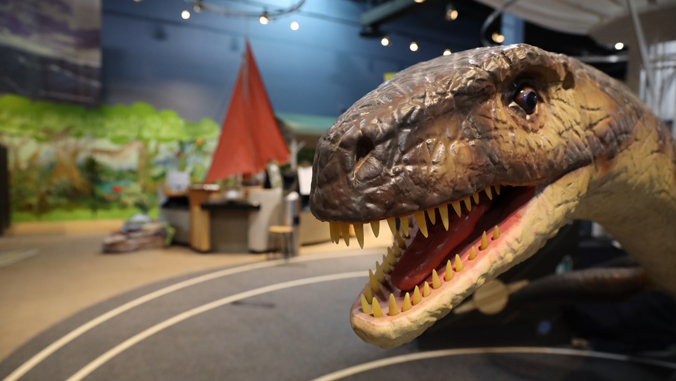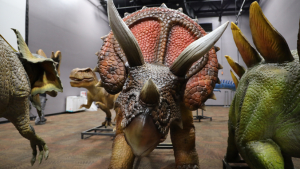
The ʻImiloa Astronomy Center invites the community on a thrilling prehistoric adventure with Expedition Dinosaur: Into the Deep. This cutting-edge traveling exhibit delves into the wonders of ancient oceans and its magnificent creatures at ʻImiloa’s Exhibit Hall located on the University of Hawaiʻi at Hilo campus from February 7 through May 4.

“This exhibit brings the mysteries of prehistoric life to the forefront, connecting science, technology and imagination,” said Kaʻiu Kimura, executive director at ʻImiloa. “We are excited to inspire curiosity and provide a unique opportunity to explore the world through the lens of a paleontologist.”
The immersive experience features lifelike animatronics, fossil replicas, and interactive displays that bring prehistoric giants like mosasaurus and tyrannosaurus rex to life.
Exhibit features:

- Immersive theater experience: Board the “Time Roamer” for a 360-degree, 17-minute voyage through Mesozoic oceans, encountering marine giants and narrowly escaping the asteroid that changed history.
- Interactive displays: Engage in hands-on activities such as piecing together ancient landmasses with the Pangea Puzzle or unearthing fossils at a simulated fossil dig.
- Lifelike animatronics: Meet iconic creatures like the ankylosaurus and cryptoclidus, brought to life with realistic motion and sound.
Special programs and events
- Dinos at Dusk: Explore the exhibit after dark with exclusive evening programs on select Thursdays. Some nights are tailored for guests 21 and over.
- Paleontology Lab: Keiki in grades K–5 can dive into fossils and prehistoric life every Wednesday in an interactive after-school program.
- Spring Break Fun: March 17–21, the Hālau Lamakū Spring Break Program offers keiki a week of creative, hands-on activities inspired by prehistoric times.
ʻImiloa’s Expedition Dinosaur also features dinosaur-themed planetarium shows such as Dinosaurs of Antarctica 8K and T. Rex. Admission includes access to all planetarium programs.
Admission
For tickets and more information go to ʻImiloa Astronomy Center’s website.

